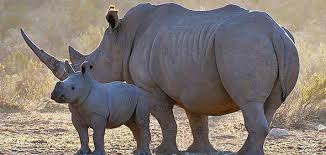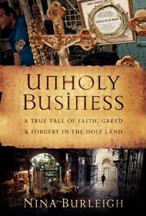IN NEWSWEEK: The billboards start appearing miles from Kruger park: "Poachers will be poached." For illiterate poachers, another sign announces, "Dehorned zone," with a picture of a living rhino without its horn. (Some private game owners remove rhino horns to deter poaching.)
The iconic Big Five animals trophy hunters covet are lion, rhino, elephant, Cape buffalo and leopard, but it is the endangered rhino that has become a potent symbol for the ugly inequality between whites and blacks in post-apartheid South Africa.
The rhinoceros's bloodlines stretch back to a giant relative that roamed lush grasslands 30 million years ago. "It is a miracle that this prehistoric idiot still exists," wrote T. Murray Smith, former president of the East Africa Professional Hunters Association. For thousands of years, the primeval beast's descendants roamed the grasslands of Asia and Africa by the millions, but now fewer than 20,000 of them roam free. South Africa is home to 79 percent of the world's rhinos, and half of them live in Kruger park. Rhino numbers there and worldwide have been plummeting since Asian demand for their horns exploded about 10 years ago, after a Vietnamese general declared that powdered rhino horn had cured his cancer. Rhino horn sells for $3,000 a pound, which can turn poachers into kings in villages without running water or electricity.
Read the rest here.









Leave a comment